The Elcocks – Daltons – Jones – Harris of Glyn Neath – Porthcawl – Newton -Swansea – Argyll.
\\\ updated 2023
1818 Henry Elcock baptised, 27 December 1818, Argyll, Scotland.
1838 Elizabeth Dalton, born Hounslow, Middlesex, (also sometimes recorded as born 1840).
Elizabeth Dalton marries Henry Elcock (Henry’s 2nd marriage) and has four children Mary Ann, Fanny Jane, Alfred Charles, and Alice Elizabeth.
1858 Mary Ann Elcock was born.
1861 Fanny Jane Elcock was born 31 January, 1861.
1863 Alfred Charles Elcock born 27 October, 1863 Clyde Mills district Argyll.
1866 Alice Elizabeth Elcock born 1 June, 1866.
1858 Jessie May Smith (nee Morris) is born.
1858 William Eastcott Smith is born 7 December, 1888.
Henry is noted as the manager of the Dunoon-based Curtis & Harvey Powder Mills.
A silver salva tray was presented to him when leaving the firm with the following words inscribed –
Presented with a silver tea and coffee service to HENRY ELCOCK Manager Clyde Powder Mills, Glenlean, Argyllshire, by a number of friends on the occasion of his leaving Scotland for South Wales for a more important charge under his present employers Messrs. Curtiss & Harvey, London, dated 9th May, 1872. Read more > Gunpowder Mills.
Henry was leaving Scotland with his family to move to Glyn Neath, South Wales, where he became manager of the local gunpowder mills at Glyn Neath. The powder mills supplied the local coal mines, being used as explosives to help blast out coal seams.
Further information below, about the Vale of Neath Powder Company, taken from Wikipedia.
In 1857, the Vale of Neath Powder Company built a “gunpowder factory”, having obtained “a licence to erect their mills over a space of two miles including the Upper and Lower Cilliepste Falls”. The site on the River Mellte was chosen because of its remoteness and because of the availability of both water power and timber for the production of charcoal, one of the ingredients of gunpowder. An inclined tramway was built from a siding on the Vale of Neath Railway near Pen-cae-drain. This was used to bring in sulphur and saltpetre, the other ingredients required in manufacturing. A horse-drawn tramway linked the various buildings on the site. The horses were fitted with copper horseshoes to reduce the likelihood of sparks. In 1862, Curtis & Harvey took over the site. They later merged with Nobel’s Explosives Co. and finally became incorporated into Imperial Chemical Industries Ltd. in 1926. The works closed in 1931 and the now ruined site is still known locally as ‘The Gunpowder Works.’
The site currently is administered by the National Park Authority and there is a network of footpaths to follow when visiting the site.
1866 Evaline Anne Harris was born 15 January, 1866, in Malvern, Worcestershire, to Charles Harris and Janetta Jones, a sister to John Henry Harris Harris.
Charles Harris was noted as the landlord at The Unicorn Inn, Malvern. The family moved to Neath late 1860s.
Charles became a district agent for the Neath region, acting for The British Imperial Insurance Corporation Ltd., a Manchester-based Insurance company that existed between 1867 and 1876. An advert placed in the local paper, The Western Mail, 17 February 1871, confirmed his address as East Ludworth Villa, Neath.
1870 Charles Harris is noted as operating refreshment rooms at the Great Western Railway Station, Neath, 1870.
1875 Picture taken from Worrals directory advert, 1875, confirms his business interests also as a wine and spirit merchant.
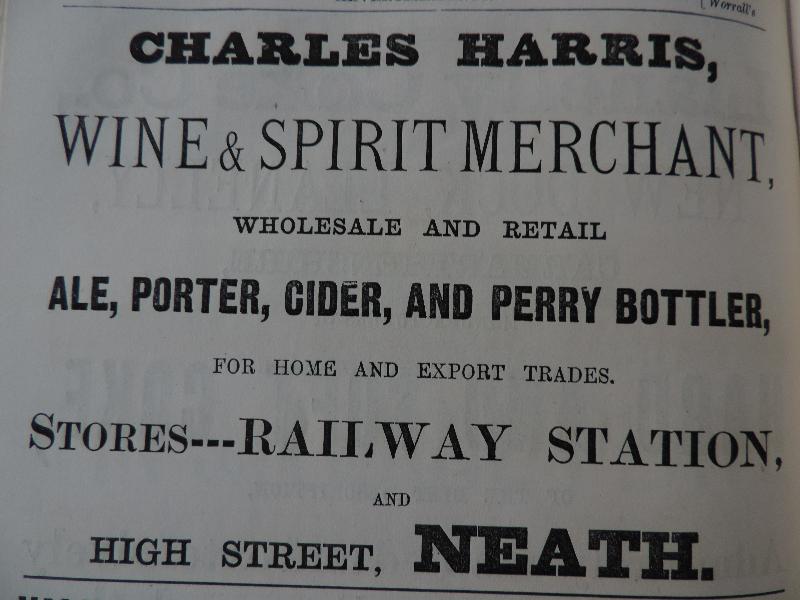
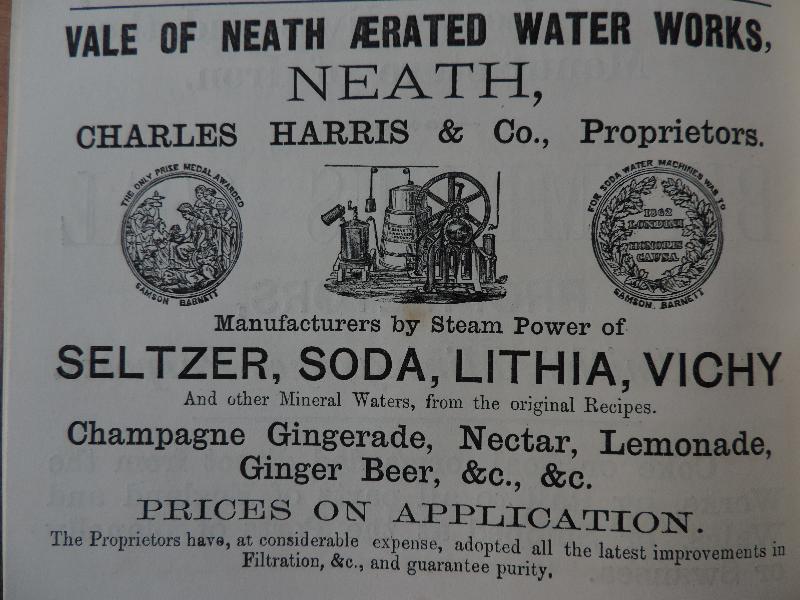
Local Welsh bottle production expert, Mr Lemon, considers that Charles Harris had business acumen, using a new type of bottle in the UK, ahead of the emerging UK soft drinks industry that became common place by 1890.
It is believed that Charles rented stores at Neath Railway Station from one of the several businesses taking GWR leases in the goods rail yards, storing his products for wholesale.
Charles sold the High Street Brewery to an H. Stone, Esq., who lived close by at West Ludworth Villa, Neath.
It is noted that he was also trading as “The Vale of Neath Aerated Water Works”. There are later mentions of this business still in existence during the early 20th century, in the archives of the Commercial Motor Trade magazine, mentioning the firm’s purchase of a second-hand Lotis delivery van.
It is further believed that Charles may have had a shop at Windsor Road, Neath, trading The Vale of Neath Aerated Water, around 1886.
Bottles within the Harris family drinks business at Neath Railway Station are the very early, and rare Codds patent bottle of 1870, of which only one exists to date, the green bottle, pictured below left.


This bottle is held in a private collection in Neath.
There is also what is known as a 10oz Skittle from the 1880s.
Janetta Harris, Charles’ wife is known to have operated the tea rooms at GWR Neath Station after Charles’ death as lessee and at Landlore station but didn’t seem to issue any bottles. However, it is noted that Evaline Anne, her daughter, was working in the family business and later issued bottles.
1885 Letters are noted to have been written, 22 August, 1885, to the local newspaper by disgruntled passengers, complaining of long waits for other trains, and that there were no refreshment rooms operating at Neath Station. The ticket inspector forbade passengers to exit the station to nearby coffee taverns meaning passengers had long waits on occasions for other trains without refreshment facilities.
1886 Alfred Charles Elcock marries Evaline Anne Harris (born 15 January, 1866, in Malvern, Worcestershire), now living at Glyn Neath, Wales, and they have four children, Henry Charles, Reginald, Alfred, and Adelaide.
Evaline Ann Harris, known to have worked at the railway refreshment rooms at some point, issued a stone ginger beer bottle around 1895/7. There are around five in existence, known today, and is pictured above with the Codds bottle. Evaline would have been aged in her late twenties.
Evaline’s siblings included Beatrice Mary, Charles William, Adeala Janetta, John Henry, and Elizabeth Harris – all detailed in a bible that belonged to Evaline.

1886 Charles Henry (Chas) Elcock is born December, Neath.
1888 Reginald Elcock is born at The Gun Powder Works, Glyn Neath.
1888 William Eastcott Smith and Jessie May Morris marry, in Wiltshire.
1888 Kathleen Smith is born 17 December, 1888.
1891 Alfred Charles Elcock is born at the Gun Powder Works, Glyn Neath. (Some records show 1889).
1891 Census information shows that Charles Elcock, aged 5 was living at Briton Ferry, Glamorgan.
1891 Adelaide (Adela) Dalton Elcock is born at Bridgend.
1892 Henry Elcock died 2 January, 1892.
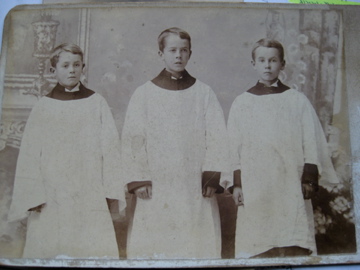
1901 Census information confirms Evaline Anne Elcock (nee Harris) is now a widow and living with her mother Janetta Jones (nee Harris), also originally from Worcestershire, and stepfather, David H. Jones, from Brecon, along with the children.
1901 Census information confirms that Elizabeth Elcock (nee Dalton), aged approximately 61, was living at Bryn Golwg, Rhigos, Neath, with her daughter, Alice Elizabeth Elcock.
Currently, there are no pictures available of the tea rooms but a picture below of GWR Neath Station, taken circa 1970’s from pages of Wikipedia provides a glimpse into station life.

1905 Alfred Charles Elcock, Evaline’s husband, is recorded as dead, at Swansea, run over by a powered vehicle. However, census 1901 information indicated the death was during or before 1901.
1905 Janetta Harris died 6 March, 1905. Her executors to her estate were her son, John, living at 137 Arabella Street, Roath Park, Cardiff, and Evaline Anne, her daughter. She is named as the lessee of the tea rooms at Neath and Landore stations, and currently believed that the leases were not passed down in the family but ceased at this point.
Landore station was operated by The South Wales Railway but amalgamated with the Great Western Railway, GWR, during 1863. GWR had been taking back refreshment room leases since 1895, bringing them back to operate “in-house.”
1908 Adelaide Dalton Elcock marries Walter Elwy-Jones at Cardiff and was noted as Adelaide Dalton-Jones.


The Cambrian covering the wedding details 1908.
Read more > The Cambrian.
1911 Census information confirms that Evaline Anne Elcock (nee Harris), is now living as a widow at Newton Nottage with one of her four children, Charles (Chas) Henry Elcock, who states that he is a civil engineer with The Great Western Railway.
The Census confirms that Reginald is boarding elsewhere, in Wales, also employed with The Great Western Railway as a tube engineer.
1911 Charles (Chas) marries Edith Francis, October, 1911, at Glyn Neath, and they have two children called Eric and Jean.
1911 William Eastcott Smith, the butcher, died 20 September, 1911, leaving effects to his widower Jessie May in Wiltshire.
1912 Adelaide Elwy-Jones (nee Dalton Elcock) and Walter celebrate their first and only child’s birth, a boy, 6 August 1912, Walter Nigel Elwy-Jones, and move to Glenbaden, Abergavenny.

The picture features Adelaide with Walter Nigel circa 1917.
1914 Reginald and Kathleen (nee Smith) marry at Swindon, July 1914.
The coat of arms featured left, is believed to be the Elcocks being researched by Mary.
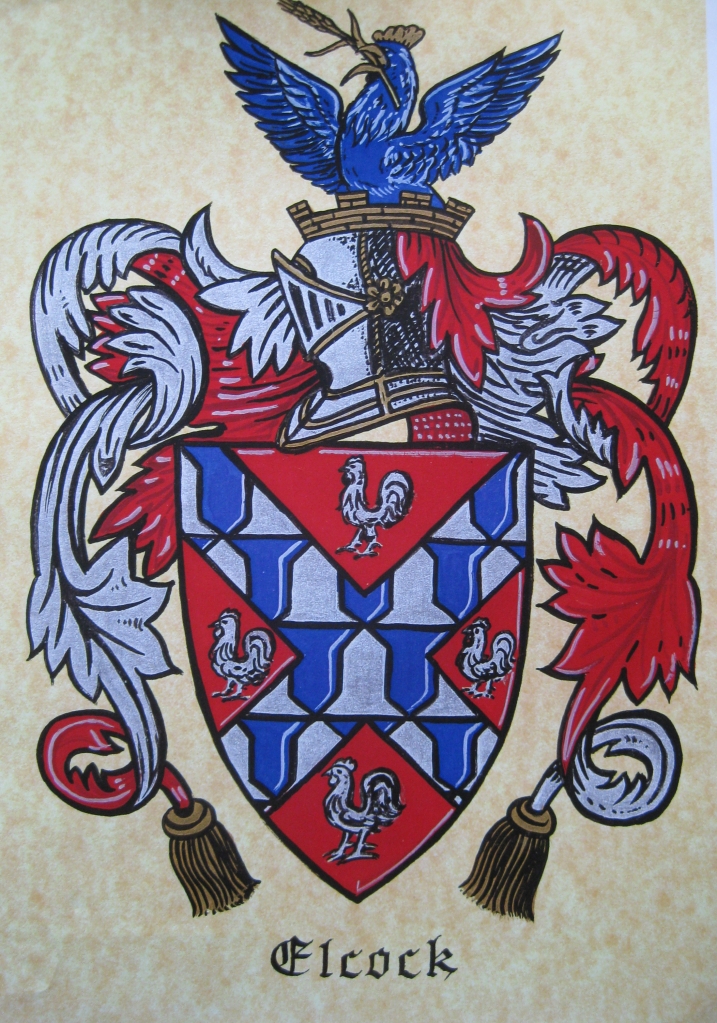

1914 Reg played rugby for Wales and pictured far right back row in this picture, 31 October, 1914.
1914-1918 Reginald Elcock was commissioned 2nd Lt and later, promoted to Lt Kings (Liverpool Regiment). Read more London Gazette (Ref 29532 / 3532).


Picture of Captain Reginald Elcock above.
It is thought that Reginald was in the Souchez Valley area early. 1916, the British Army waiting to replace the French Tenth Army during February, 2016, having landed in France on 1 October, 1915.
Information taken from wikipedia states –
‘The German attack on Vimy Ridge (Unternehmen Schleswig-Holstein/Operation Schleswig-Holstein) was a local attack on the Western Front on 21 May, 1916, during the First World War. The Germans intended to prevent mines being blown under German positions by capturing the British front line and mine gallery entrances. After the Third Battle of Artois (25 September – 4 November 1915) The French Tenth Army had held positions on the western slope of Vimy Ridge and the German 6th Army occupied positions on the steeper eastern slope. During the Battle of Verdun (21 February – 18 December 1916), the Tenth Army was withdrawn and the British First Army and Third Army on either flank, took over the French positions.

The Glamorgan Gazette notes on 21 July, 1916, that Reg, a Lieutenant, was injured fighting at the front, The Somme, which commenced 1 July, 19016. Reginald had removed his helmet and was shot at. The helmet actually helped to save his life as he was holding it in front of him and received shrapnel wounds. He returned home later in 1916.
A letter is written to Kathleen by Reginald when injured at the Front.


According to war records Reginald was awarded the Victory and British Star campaign medals entering France, 1 October, 1915, as featured below.

1917 Charles Henry Elcock is recorded as 2nd Lt with The Royal Engineers, in the Territorial Army. Charles was an engineer with the Great Western Railway in Wales. He is recorded entering “The Theatre of War” 17 November, 1917, according to War Office records, awarded The Victory and British Star medals.
His home address recorded was Brynhenlog, Peywearn, Neath.
1915-1918 There is much confusion over Alfred’s role in the war with his “Theatre of War” date recorded as 29 December 1915 as a private no 26174.
Alfred went missing sometime during 1915, thought to have been killed in action, but is found later to have enlisted with the British Labour Corps (Imperials) now recorded as no 14218 Guardsman Elcock, Frank Charles.
The Labour Corp was formed from less fit men who failed the enlisted test of being able to run 5 miles or were blind or older men. From its formation in 1917, the Labour Corps grew to over 500,000 by November 1918, of which some 300,000 served in France. The last of them didn’t come home, back to the UK, until 1921.
They were employed on a wide variety of tasks including maintaining roads and railways under shell fire, digging, reserve positions, moving ammunition and battlefield clearance. (The BIG task was finding rotten corpses in the trenches, identifying them, putting them into temporary graves, exhuming them when safe to do so then organising a proper burial). Some of them were within the range of enemy guns for 6 months without a break.
Extraordinary courage displayed by older and less fit men. (Archive > Rootschat).
Frank Charles married Josephine Galea while he was posted in Malta, and had 3 children. His first child, a son, was born 1918, Frank Charles, who died 24 May, 1998.
He emigrated to Canada but his family stayed in Malta. He eventually lost contact with his family. A letter was written to his sister in England, Adelaide Elwy-Jones, by a Canadian Officer, an army division of The Canadian Army, informing that he was alive and well, about 1921.
1938 He was last known to be living in 1618, Hamilton Street, Vancouver, British Columbia, Canada, aged around 49/50.
1917 Reginald Elcock married Kathleen (nee Smith) is noted as living at The Old Orchard Cottage, Newton, Porthcawl, and has a daughter named Mary Dalton Elcock.
Post The Great War –
On returning from the War, Reginald founded a motor vehicles and garage business funded jointly with his business partner, his mother, Evaline Anne Harris, trading with the same name as previously, as the tea rooms, as E. A. Harris and Co. selling Ford ‘T’s, based in Swansea, at the end of the War.
Henry Ford had just revolutionised the car industry by introducing moving assembly lines. The system in Detroit, USA, reduced the time it took to manufacture a Model T from 12 hours to 90 minutes.
The Ford garage owners were encouraged to market their cars by putting mirrors under them to let buyers see the mechanics. The family still has the original mirror used in the Swansea garage. Read more > Ford production line.
The date is not exactly known, about 1920, that Reginald opened a garage depot and car sales at Newton Nottage, called “The Globe,” 1 Bridgend Road, which closed during the late 1970s but where the land today, remains trading as a petrol station.
Kathleen was born in Swindon, parents were William Eastcott Smith (born 7 December 1888) and Jessie Emily Morris, who owned Broome farm, an abattoir, and a butcher’s shop in High Street, ‘E.Smith’ Old Swindon Town.

1919 Jessie May Smith died.
1919 Evaline Anne Elcock (nee Harris) marries Mr Jeffreys, a noted bottle manufacturer at Newton Nottage parish church, St. Johns.
1919 Mary Elcock was born


1923 The first picture features Adelaide with Polly the pony in the orchard at her home in Abergavenny with Agnes, the maid, and the second picture of Walter Nigel Elwy-Jones and Mary Elcock (cousins) playing. It may have been taken at the farm in Swindon which sadly, today, forms part of the M4 motorway.
1924 Adelaide Elwy-Jones (nee Dalton Elcock), and Walter Elwy-Jones divorce. Adelaide is noted as living at Porthcawl shortly afterward. Her mother, Evaline Ann Elcock (nee Harris) also a resident at Newton Nottage.
1924 Alfred Elcock now called Frank Charles settles in Canada after WW1.
1928 Elizabeth Dalton Elcock died 18 February 1928.
1930 Evaline Anne (Elcock) Jeffreys (Nee Harris) died. The picture below of Evaline.


The second picture is the headstone of Evaline buried at Newton Nottage Parish Church, Porthcawl.
1930 We know from a number of pictures that Reginald Elcock became a Conservative councillor at Porthcawl, and retained his seat for a number of years, and enjoyed the position of Mayor. He remained living at Newton Nottage, having bought the entire family home from the executors from Evaline’s estate, his late mother, which had been left to all children.
1938 The last that was heard of Frank Charles Elcock by his Maltese-based family, last known to be living in 1618, Hamilton Street, Vancouver, British Columbia, Canada. Aged around 49/50.
1939 Charles (Chas) Henry Elcock died 25 February 1939. He was living at 7 Caegywn Road, Whitchurch, Cardiff.
1939 Reginald Elcock helped with the War effort by working for the Ministry of Agriculture, being responsible for ensuring that all local farmers and food producers had the equipment and facilities they needed to maximise harvests and production.
Sir Thomas George Jones KBE lived locally at Beachside, Porthcawl, South Wales, who sat on the boards of Piccadilly Hotel Ltd., and R E Jones Ltd. He worked for the government at The Board of Trade, with interests in food for South Wales, and then by 1941, became Chief Divisional officer for Wales, Midlands and NW England, until 1945. It is possible that Reg reported to Sir Thomas. Read more from The Times newspaper archives > Sir Thomas George Jones.

1940 Mary Dalton Elcock, pictured above, volunteered for The Woman’s Auxilliary Air Force and joined the ranks, but with her education, was soon moved to serve as an officer, as British Aide to the American Aide, to General Dwight D Eisenhower, Supreme Commander of the Allied Forces in Europe, serving at Norfolk House, SHAEF HQ, London
The second picture above is taken outside Llwyn Rhos, Newton, Porthcawl, the Elcock home.
Many of the benefits during the war years, were being assigned to the American military for the quality of food and beverages served to troops, compared to rations of the British forces.
Whenever Mary could get back to Porthcawl, she would try and get a ‘lift’ with the RAF to Stormy Down, the airfield at Newton which had been assigned 1939, and was operational throughout the war until 1947.
1942 Mary Dalton Elcock married Philip Stevens.
1944 June 6 saw D-Day and much was planned at Norfolk House, St James Square, London W1 by SHAEF HQ where Mary worked under General Eisenhower.
The night before 6 June 1944, all WAAF staff had a personal copy of a letter written by Eisenhower left on their bunk beds. The family still has this in their collection of archives.
1944 Mary went to Reims, 90 miles northeast of Paris, and set up the staff offices for Supreme Allied Commander General Dwight Eisenhower – SHAEF – Supreme Headquarters of the Allied Expeditionary Force – after D-Day – which was located there for the last year of the Second World War. It is here that the European War came to an end with the signing in May 1945. Read more > Eisenhower > http://en.wikipedia.org/wiki/Dwight_D._Eisenhower.
1946 Anna Stevens was born.
1961 Lt Col Walter Elwy-Jones died, Adelaide (nee Dalton Elcocks’s) ex-husband.
1963 Reginald Elcock died recorded as living at Llwyn Rhos, Newton, Porthcawl, 13th November, 1963.
1964 Adelaide Dalton-Jones died at Hove, Sussex. Buried at Newton Nottage Church, with her mother.
1978 Kathleen Elcock, (nee Smith) remained living at LLwyn Rhos, Newton, died 12 December, 1978.
Kathleen had prepared an astonishing chart of the Elcock direct descendants family tree dating back to the 15th century, which greatly helped in the preparation of this page.
We’re always pleased to hear from readers who may have information or memorabilia. Please use our ‘Leave a Reply’ messaging service at the foot of the page. Spotted out-of-date information or broken link? Please contact us. Updated 2023
Copyright since © 2012
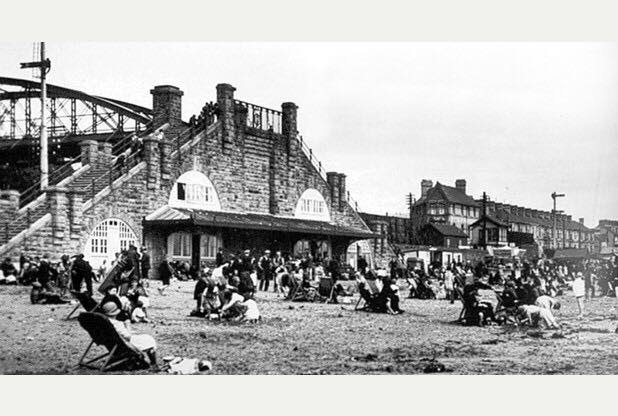



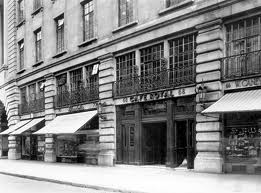





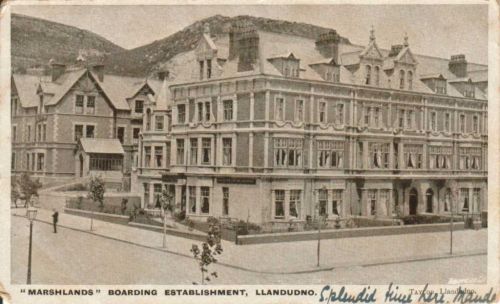


The Welsh rugby team on 31/10/14 looks to be captained by Walter Martin (Wales) and was at Hove between English & Welsh troops based in Shoreham & Seaford. England won 24-0. Proceeds were shared between the Prince of Wales’s Fund and the Belgian Refugees Fund.
Howard Evans 02920 778623
My grandmother’s birthright name is Jean Marie Elcock. This is our family coat of arms also, though ours may look a little bit different. I would love to get in contact. We have limited knowledge on the name and family.
Hello
Thank you for the information and passing this information to an “Elcock”
Best wishes
As a family member mentioned on here I think it is brilliant. Thank you for all your sharing.
Hi
It is lovely to see the family of my 2x great grandaunt Elizibeth (Dalton) Elcock. Elizabeth is the sister of my 2x great grandfather Joseph John Dalton.
Many thanks
John Amatt
Cairns-Australia
The Elcock family are related to me as 5th and 6th cousins. Your family tree is very well written and also very interesting information.